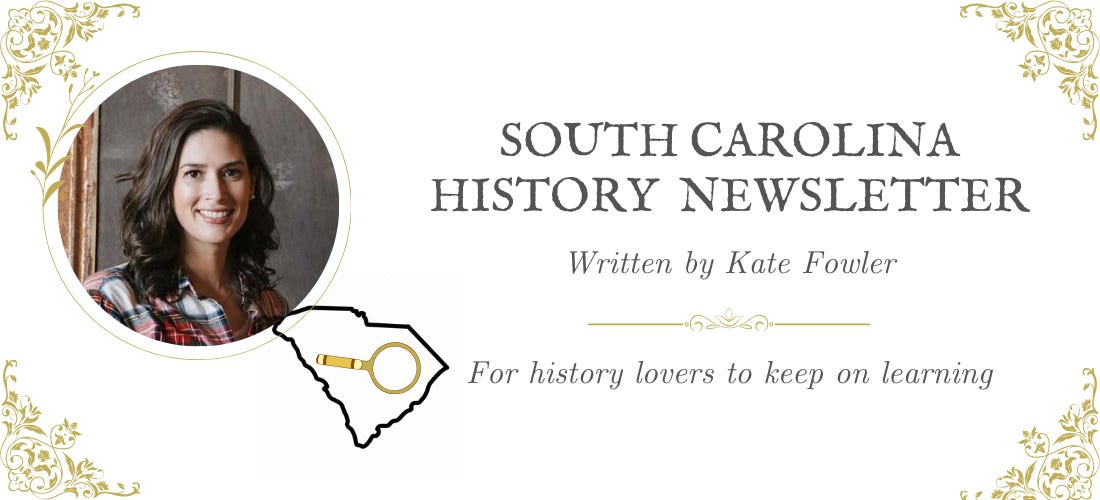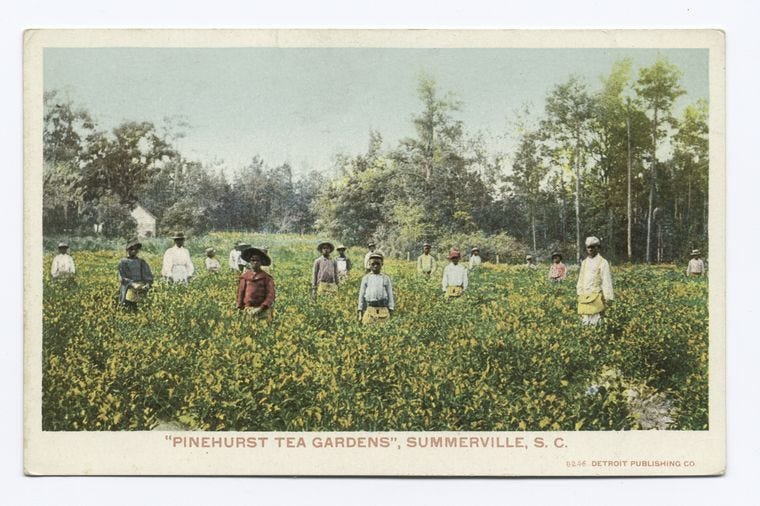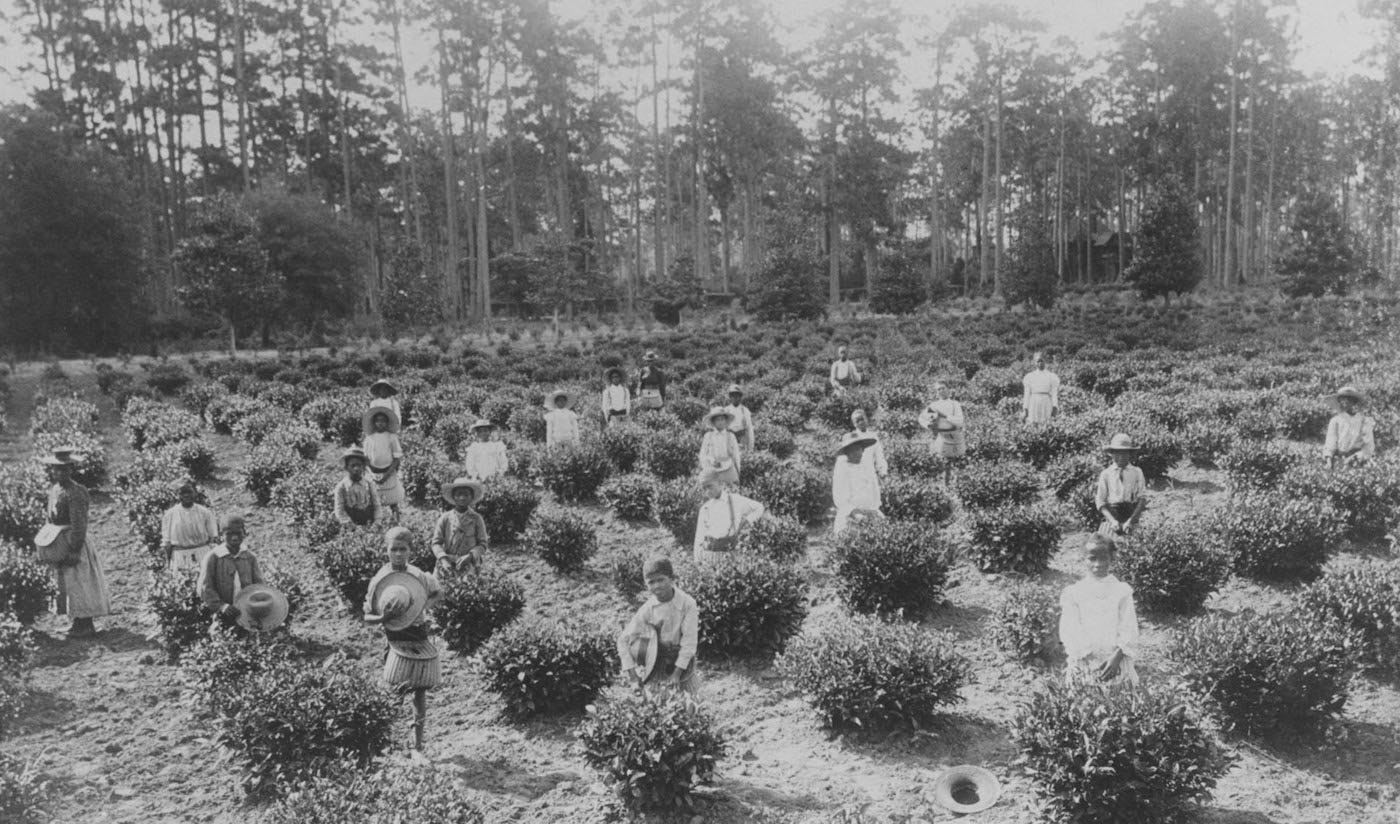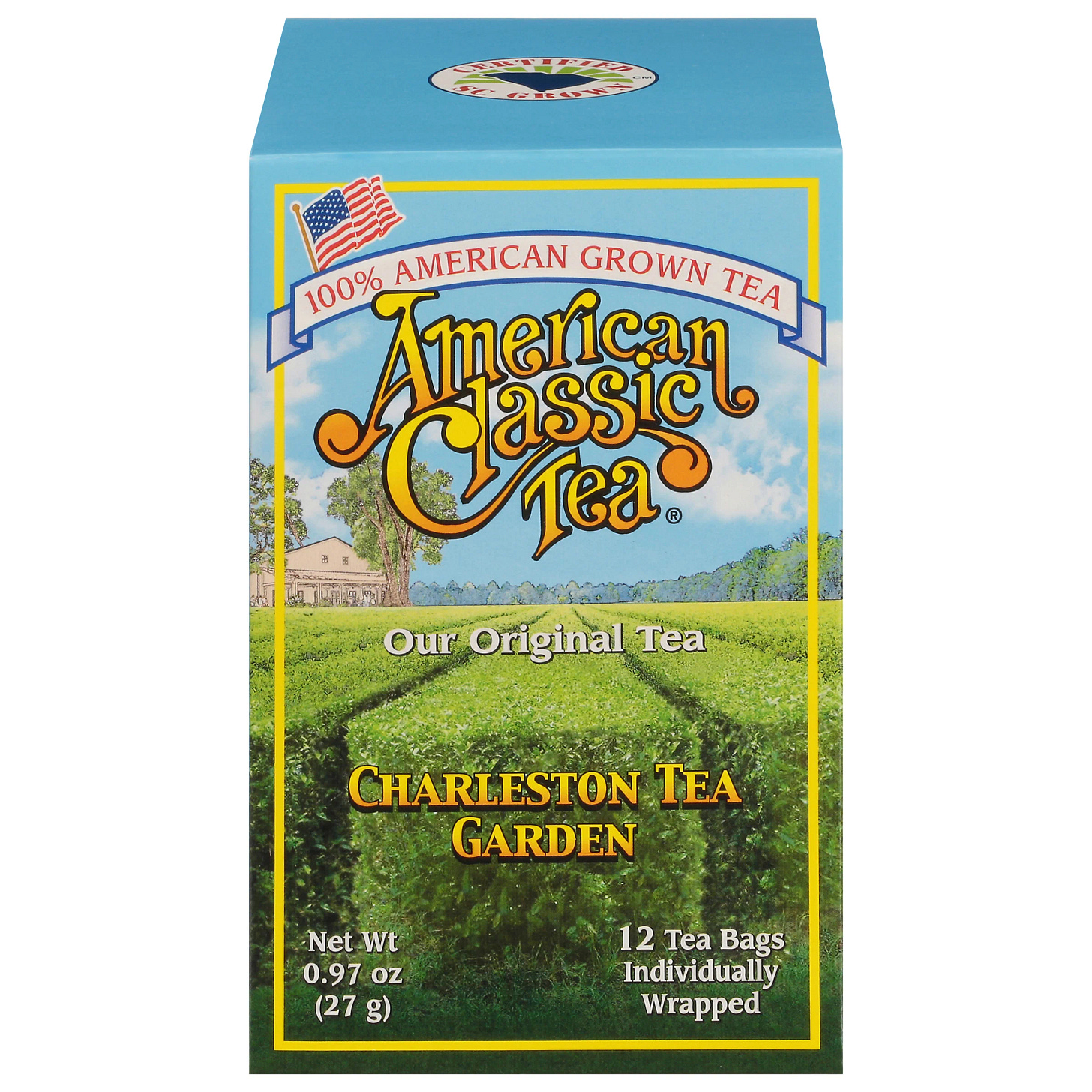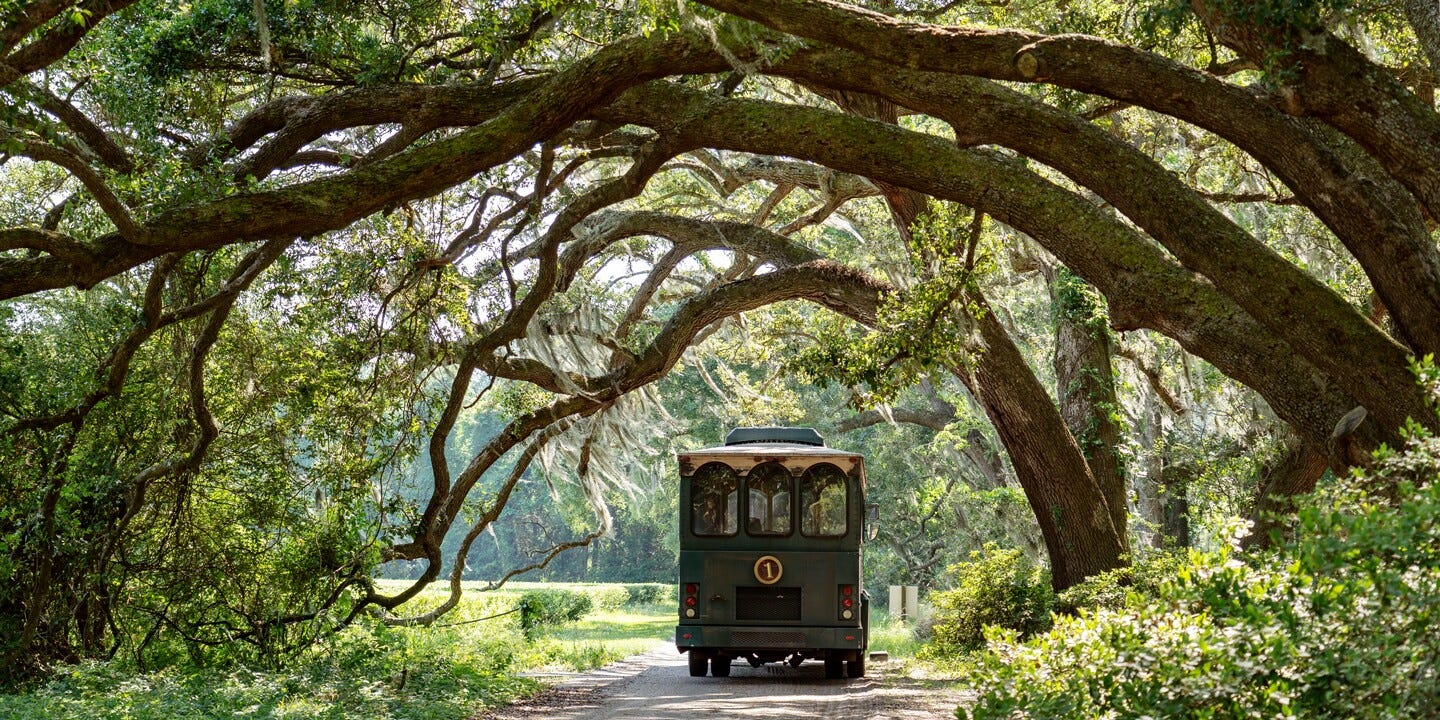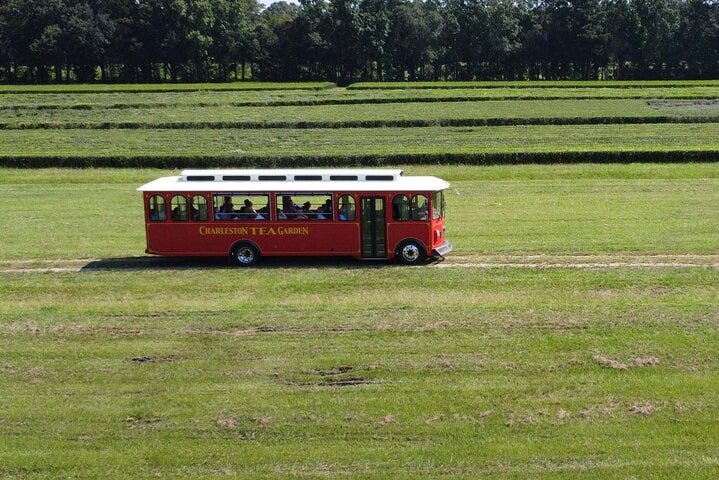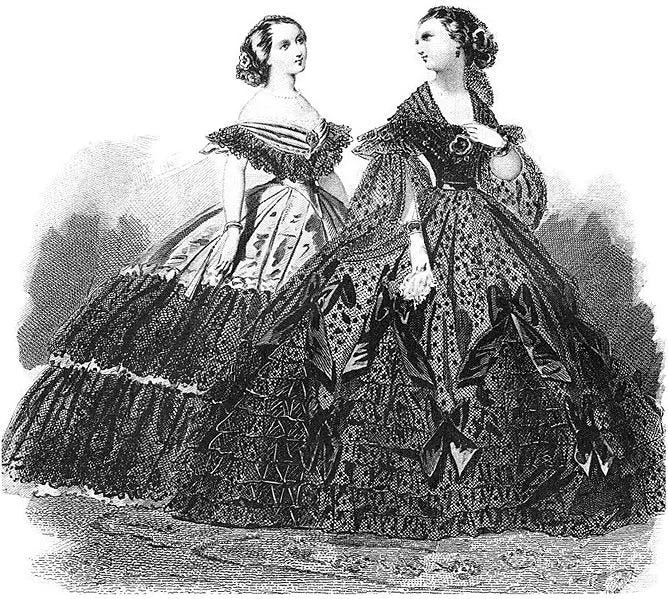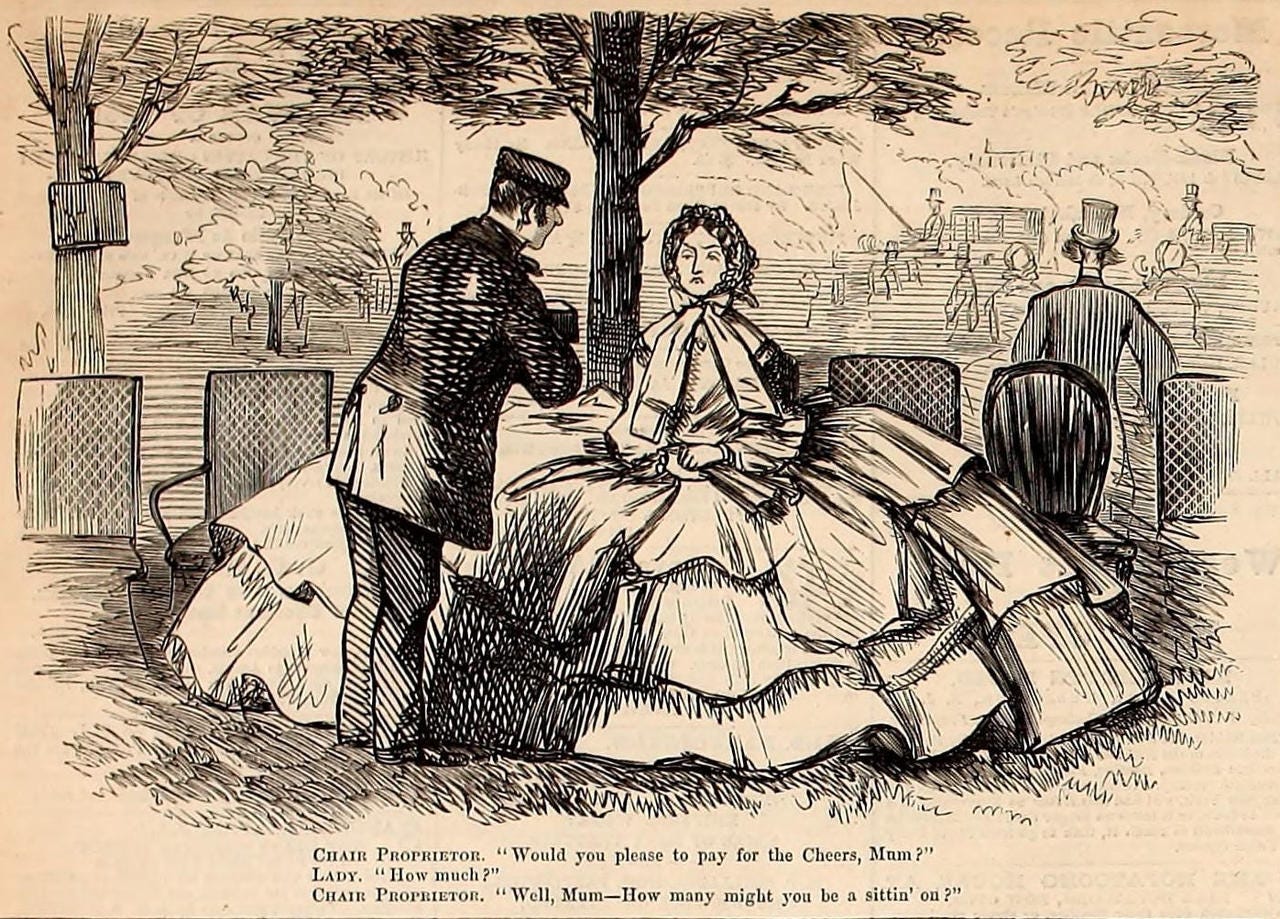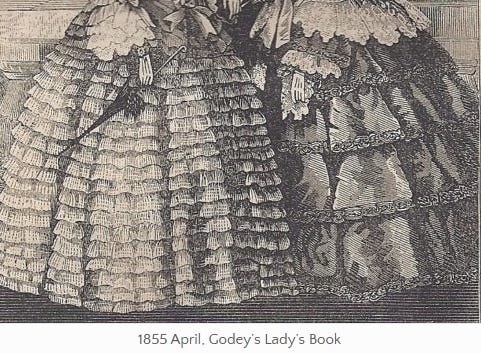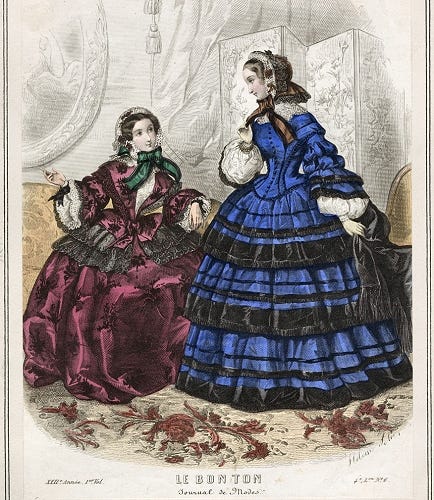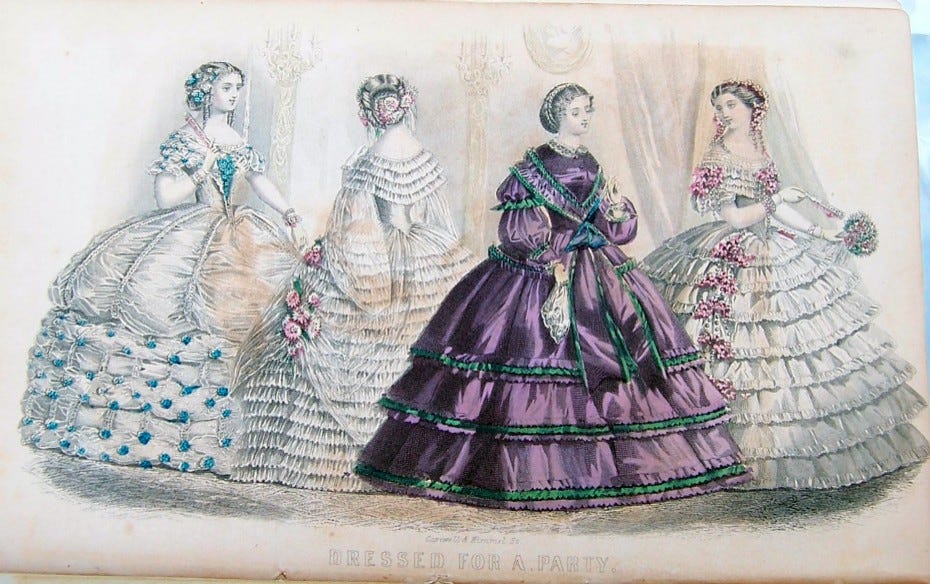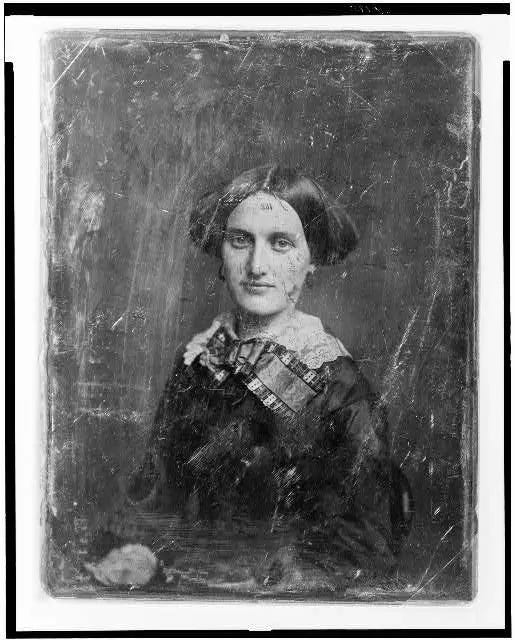#51: Charleston Tea Garden, antebellum women's fashions, and a lecture on Harriet Tubman's daring raid
For South Carolina history lovers far and wide! Enjoy weekly SC history and upcoming SC historical events
Dear reader,
Welcome to Newsletter #51 of The South Carolina History Newsletter! I’m so happy you’re here.
I’d like to extend a special welcome to the following new subscribers of the SC History Newsletter community below! Woohoo!
djballourh
ashley.cassel
gracie.mae
Adamsdlln63
caitlin.w.pfeiffe
stokes2012
cfvaughan318
lowcountrycanuck
michael.peek
ang_od23
I hope you enjoy today’s newsletter, and as always, please feel free to reply to this email with your ideas and suggestions on South Carolina history you’d like to learn more about. I’m only a click away.
Additionally, please join us & keep the conversation going by becoming a member of our SC History Newsletter Facebook Community here! I can’t wait to meet you.
And now, let’s learn some South Carolina history!
Yours truly,
Kate
(Writing from Greenville, SC)
➳ Featured SC History Event
Please enjoy our featured SC History Event below, and click here to visit my SC History Events Calendar that organizes all the upcoming SC history events I have discovered. Please let me know if you’d like to add an event to the calendar! Reply to this email or send me a note at schistorynewsletter@gmail.com.
Wednesday, May 8th from 6:00 - 7:00 pm | “Dr. Fields-Black on "Combee" and Harriet Tubman's Daring Raid” | Charleston Library Society | Charleston, SC | TICKETS: $50 for members, $55 general admission
“Many biographies, children's books, and films about Harriet Tubman omit a crucial chapter: during the Civil War, hired by the Union Army, she ventured into the heart of slave territory — Beaufort, South Carolina — to live, work, and gather intelligence for a daring raid up the Combahee River to attack the major plantations of Rice Country, the breadbasket of the Confederacy. Edda L. Fields-Black — herself a descendant of one of the participants in the raid —shows how Tubman commanded a ring of spies, scouts, and pilots and participated in military expeditions behind Confederate lines.”
➳ SC History Fun Facts
I.
Did you know that the Charleston Tea Garden on Wadmalaw Island is the only large-scale commercial tea plantation in America?
In the late 1700s, French botanist, André Michaux, brought the tea plant Camellia sinensis to the United States and gave it to Henry Middleton, a prominent planter and public official in Charleston. Michaux and Middleton planted the tea at Middleton’s plantation (which by the way, is open to the public and a wonderful place to visit). The tea seemed to thrive in areas like Charleston and Georgetown, but over the next 150 years, no company was able to successfully establish a tea farm. Tea plantations failed in Georgetown, Greenville, and Summerville.
Beginning in 1880, despite “two failed attempts to grow tea in South Carolina,” the federal government started a new tea experiment. It established an experimental tea farm at the former Newington Plantation, in Summerville, SC.
In 1888, Dr. Charles Shepard, a philanthropist and professor at the Medical College of SC acquired 600 acres of the Newington Plantation property. He established the Pinehurst Tea Plantation using plants from the government’s farm. He cultivated about 100 acres, built a factory, and began to sell his tea commercially, “becoming the first successful commercial tea farm operation in the United States.”
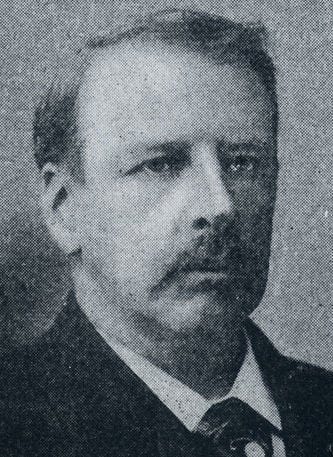

The photo above depicts students and teachers in front of the Pinehurst School on the Pinehurst Tea Plantation circa 1900. Students from the Pinehurst School provided some of the labor needed to pick tea leaves during harvest. You’ll notice the children in the tea fields in the photos above. Note that most of the boys are barefoot.
At the Pinehurst Tea Plantation, Dr. Shepard created award-winning teas until his death in 1915. After his passing, the Pinehurst Tea Plantation closed and Dr. Shepard's tea plants “grew wild for the next 45 years” until the Lipton Company purchased the plantation in 1960. They salvaged the remaining plants from Pinehurst and utilized them to open a research facility spanning 127 acres on Wadmalaw Island.
In 1987, an expert third-generation tea taster trained in London named William B. Hall, purchased the tea farm on Wadmalaw Island to establish what is now the Charleston Tea Garden. Hall’s original "American Classic" tea became the first tea ever to be made with 100% tea grown in America. In 2003, Connecticut-based Bigelow Tea Co. purchased the farm and partnered with Hall.
The tea from the Charleston Tea Garden, all derivatives of Dr. Shepard's Camellia sinensis, is still growing there today. The garden packages American Classic Tea and Charleston Tea Garden tea. It sells 9 different flavors in tea bags or the loose tea form and 5 flavors in ready to drink bottle teas. These flavors include the regular American Classic Tea, Charleston Breakfast, Governor Grey, Plantation Peach, Rockville Raspberry, Carolina Mint, Cinnamon Spice, Island Green Tea, Island Green Tea with Mint. In 1987, the American Classic Tea brand of the Charleston Tea Garden became the official tea of the White House, and it still is today.
The Charleston Tea Garden is still located on Wadmalaw Island, outside of Charleston, and is open to visitors every day of the week. Admission is free and they offer tours, tea tastings, and other amenities. The factory tour takes visitors inside the factory and covers history, harvesting, and production. And finally, The Charleston Tea Garden has a Trolley Tour that gives visitors a tour of the grounds.
(Note from Kate: adding this to my SC History Experiences bucket list! :)
II.
Let’s explore what fashions wealthy South Carolina women would have worn in the antebellum era!
Just as today trends and fashions are dictated by celebrities and other high-profile figures in the news and social media, the fashions of antebellum South Carolina were dictated by the styles of European royalty, namely Queen Victoria of England and Empress Eugenie of France. And just like women today, South Carolina ladies got their fashion tips from magazines. Ladies’ magazines like Godey’s Lady’s Book and Magazine and The Lady’s Home Magazine were widely read and fashion articles from Europe were reprinted in Southern newspapers like the Charleston Mercury. The designs of French “modistes” (sellers of textiles) were reprinted in America and copied by clothing manufacturers, seamstresses and milliners.
The main element of women’s fashion before the Civil War was the hoop skirt. Hoopskirts were also referred to as crinolines. It is worth reporting that before the famous hoopskirt was invented in 1846, fashionable ladies in Europe and America had to wear “as many as 9 underskirts beneath their dresses” to make their skirts appear fashionably rounded. The weight of the skirts led to serious back pain and other ailments, including fainting, especially when women were pregnant.
The hoopskirt provided a much-needed fashion solution by designing a technology that held the skirts out from the body. Hoops, horizontal circles of thin steel, were held in place by vertical strips of fabric. The size and diameter of the hoopskirts fluctuated with the fashions, and reached their height (of absurdity) in the 1850s. One Southern matron in Columbia, SC was known “to have worn skirts so wide that any man who wishes to walk around or alongside her as she went through town had to step off the sidewalk and into the street!”
To many men, these hoopskirts were an anomaly. Southerner J.L. Underwood said:
“One thing in the management of the hoopskirt the men never could understand. How in the world could all those steel wires be bundled and controlled when a woman rose horseback or had to be place in a buddy or carriage? It was always a like wonder how the women could dance so nimbly and gracefully with long trains and never get tripped or tangled in them. Our women managed the trains and hoopskirts just as tactfully and thoroughly as they did their hard-headed husbands and silly sweethearts. How they did nobody can tell, but they did it.”
Another onlooker James McDonald complained that “whenever one side of the…hoopskirt came in contact with an object of greater resistance the opposite side tilted skyward; and when the wearer of this garment was about to be seated she was forced to fold the rear of the skirt nearly to her waist, else when she said down the front of her garment would have tilted to an angle sufficiently high as to have exposed to view much of her underwear.”
While they were painful, restrictive, and unhealthy, corsets were standard in antebellum fashions. Dresses were made out of silk, cotton, wool, linen or a mixture (all washable and able to be spot cleaned in an era before dry cleaning). Fabrics came in a variety of colors and patterns. Skirts were very long, to the point where the shoes and ankles were barely seen.
The number of flounces, and trimming of flounces, were hotly debated fashion topics. A flounce is a wide strip of fabric gathered and sewn to a skirt or dress to help “exaggerate the character and silhouette of a skirt.” It was widely believed that between “2-20 flounces were acceptable, and the flounces could be edged with other fabrics, including plaids.” However, in 1854, Peterson’s Magazine advised “short and stout ladies to avoid flounces.”
Day-wear dresses were high-necked as it was unseemly for a woman to show skin before late afternoon. As pale skin was the style, a woman’s neck and shoulders were to be covered to avoid the sun. Outdoors, during the day, women carried parasols to protect their skin from the sun.
Evening attire featured “drop shoulder sleeves, low necklines, and voluminous skirts, held out by layers of petticoats, crinolines, or hoops.” Short, capped sleeves exposed women's arms during warmer months and for evening wear. Puffy sleeves were also in fashion. Evening dresses were made of fine satins and silks and were very low cut.
The ideal woman of the pre-Civil War South “had pale skin and a rounded face.” Hair was “parted down the center and drawn back, with soft loops on each side of the face that accentuated a round face.” These loops could be puffed out with a 'rat,' a small net stuffed with hair gathered during brushing. For dressier occasions, the side hair hung in loose ringlets from a central part.
In terms of accessories, head coverings ranged from simple lace-trimmed handkerchiefs pinned into a lady’s hair, to simple sunbonnets and elaborate, expensive hats trimmed with feathers and other ornamentation. Women owned practical aprons as well as fancier silk aprons that were placed over morning dresses to protect the fabrics. Gloves came in a variety of colors. Wealthy ladies were advised to have a pair of gloves to go with each outfit they owned. Fans were a must in the hot south and women carried 6-10 inch folding fans painted with intricate designs. In an era before deodorant, a nosegay, or a small bunch of aromatic flowers and herbs, was also a popular accessory.

In terms of makeup, the Victorian era was a time when women were supposed to look natural. Wearing too much makeup was considered vulgar — only actresses and prostitutes wore heavy makeup. However, women did wear subtle rouges, and “cooling skin powders” made of “powdered almonds and horsebeans, spermaceti, Spanish soap, carbonate of soda, and oils of lavender, bergamot, and lemon.” Hair dye was sold but was controversial at the time.
In another newsletter, I look forward to talking about how the Civil War affected women’s fashions.
In the meantime, we’ll conclude with this amusing video of a modern-day woman proving that one can, indeed, sit down in a hoop skirt:
➳ Quote from an SC historical figure
I.
“Jolly hoops, that wriggle round,
Sober hoops, that sway profound;
Springy hoops, that shake and wag,
Broken hoops, that droop and drag;
Monster hoops, all overgrown,
Junior hoops, of smaller bone;
Hoops that ravish lover’s eyes…”
—1857 ode to the hoopskirt
Sources used in today’s newsletter:
I always want to improve my work. Answer the poll below to give me your review of today’s newsletter. I also welcome your suggestions for new content! Simply reply to this email with your ideas. Thank you!




